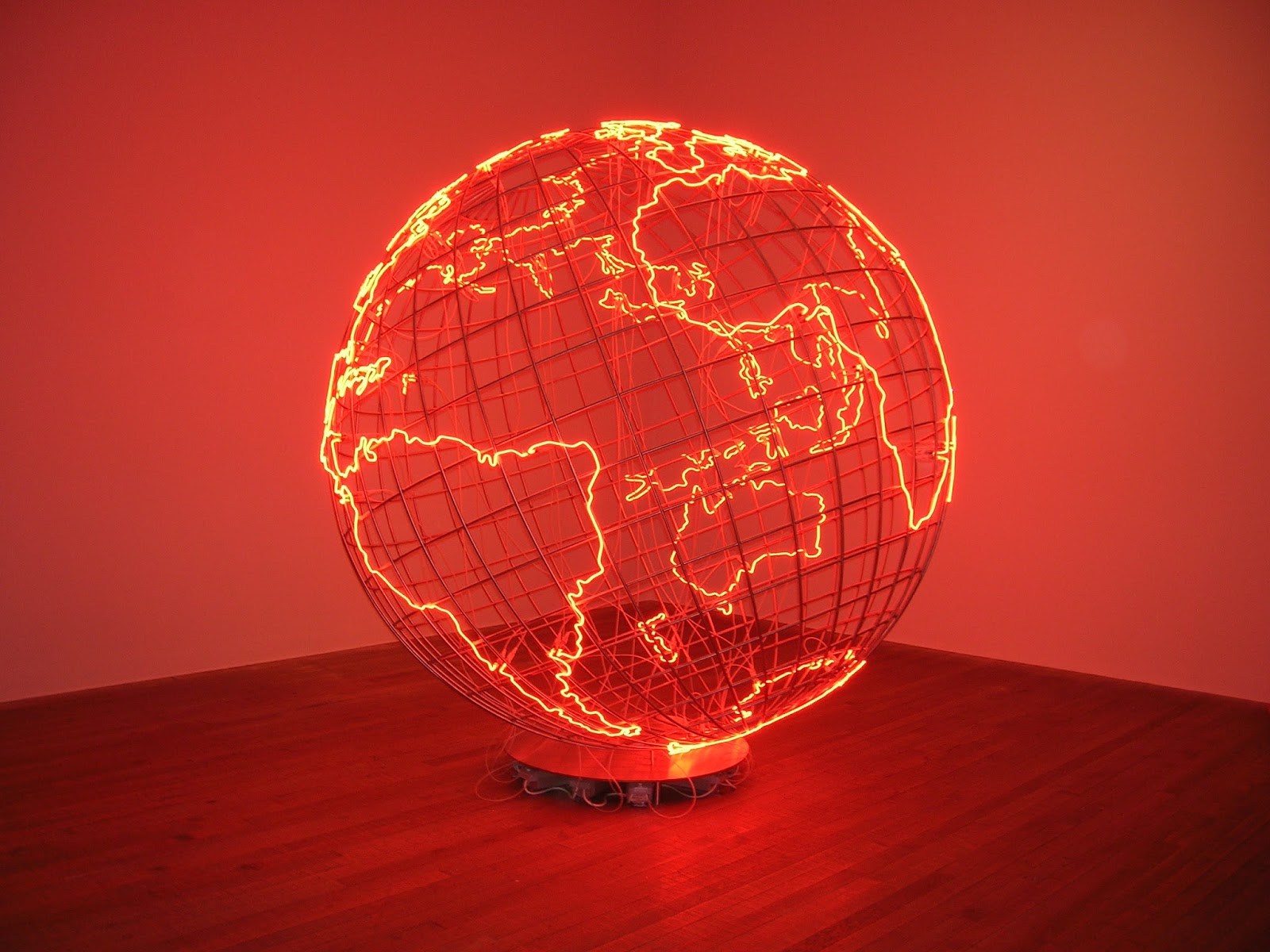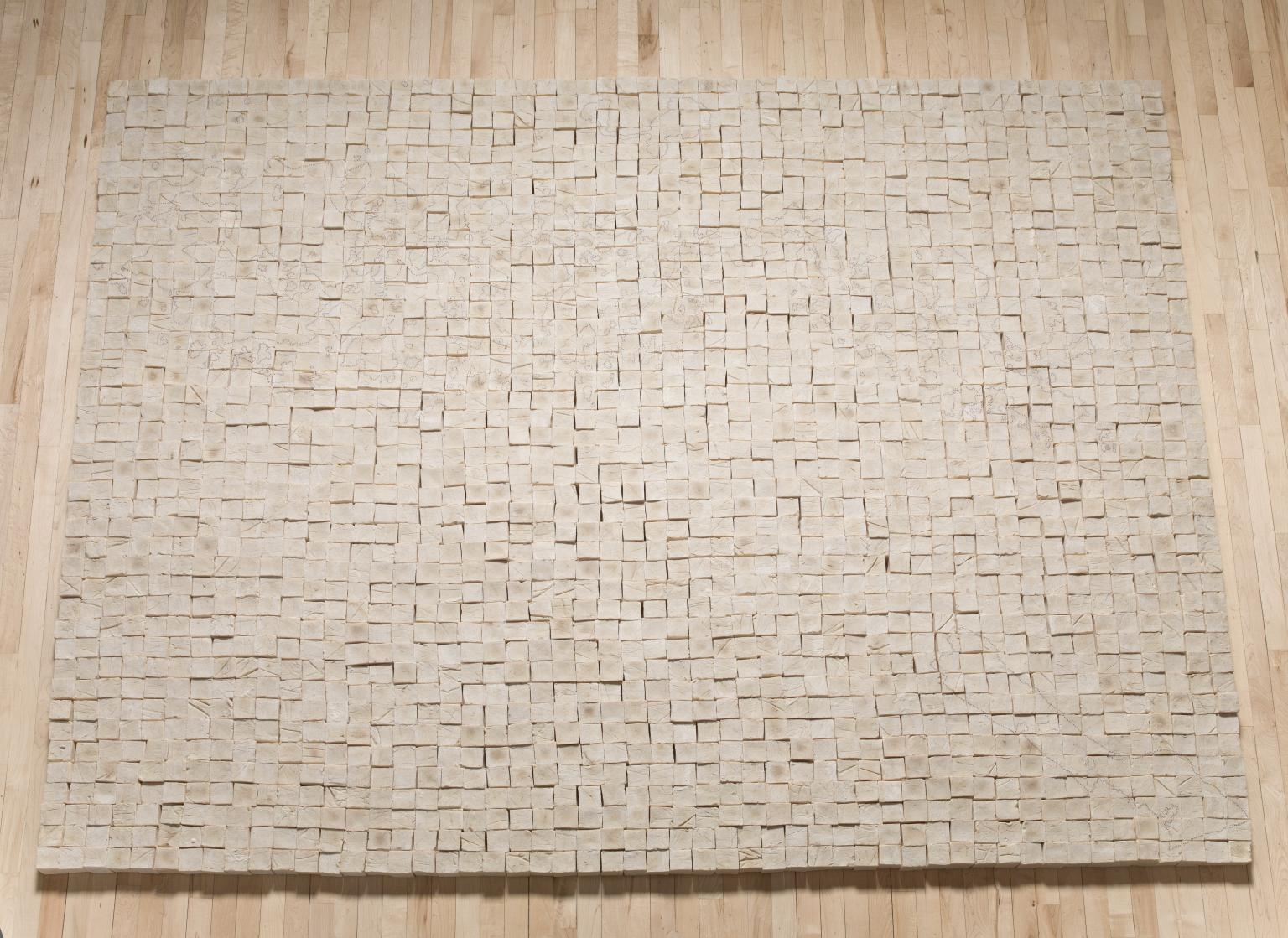Socio-political events are mass corporeal engagements in which conflicts and outbreaks carry the potential to destabilize nations. In these circumstances, the environment is no longer in stasis. Political upheaval renders society’s inhabitants in a predicament of perpetual longing for an affect of normalcy that once existed. Mona Hatoum’s installations draw out the nuanced politics of space by poetically constructing an architecture of defamiliarization.

An often-referenced piece of Hatoum’s is Socle Du Monde (Base of the World), which takes the simple form of the cube and configures it with an open upward face, a fibrous texture covers its exterior. Upon closer inspection, on the exterior of the cube appear to be entrails, a convincing surface that looks like blackened intestines. Hatoum’s approach is homologous to Eva Hesse’s Accession II—a galvanized steel cube with interiors rows of fibrous tubing—once a principal form is refigured, it is transformed into a surrealist estrangement. Reflective of Hatoum’s vested interest in interiority, exteriority, and proximity to both, the work appears solid from afar. However, upon closer inspection, the metal fillings on the surface indicate an entity that is constantly in movement.1 Even in the most seemingly “static” of planes, there is a continuous activity akin to a body at rest. Even when one is in repose, there are many biological processes silent occurring and orchestrated to keep one alive.
The cubed form is similar to Present Tense, an installation that was situated in a storefront of Old Town Jerusalem. Nablus soap blocks are arranged in a grid formation onto which red beads are pressed to create formations of islands. These islands are not imaginary spaces, but an illustration of Palestinian controlled territories as defined by an incompletely implemented peace treaty.2 The olive oil based soap is a signifier of Palestinian autonomy as it is traditionally produced in Nablus, a city north of Jerusalem. This installation signals the larger history of the region, as maps are symbols of conquest whose borders are drawn without consideration of who will be directly and most violently impacted by their delineation. Mapping has loomed larger in Hatoum’s life as well; she was born a British subject in Beirut, Lebanon to a Palestinian family and due to the outbreak of civil war in 1975 has since resided in London. Her biography is another frame to enter her work and is not its over-determined narrative as her use of semiology can have multifarious interpretations.

For Hatoum, the organization of space is a personal and political act, an ongoing reassessment what is considered familiar and a need to place oneself in relation to it. A corporeal cartography is a means of seizing control, speaking to an insatiable desire of belonging, locating, and defining space. This navigation is perfectly pictured in Hot Spot, from White Cube. A circular gridded steel frame situated on a tilted axis features a map of the world, wired on its surface in red neon.3 Only continents are outlined—not countries, a gesture that suggests the boundaries created by nation-states are unstable. For maps are never final but only gross estimations of space. This person size sphere makes a large world feel digestible, decentered and shifted on to the fact that it is simply a web of overlapping lines that intersects us all.
- Hatoum, Mona, Jessica Morgan, and Dan Cameron. Mona Hatoum. Chicago, IL: Museum of Contemporary Art, 1997. Print.
- Hatoum, Mona, Edward W. Said, and Sheena Wagstaff. Mona Hatoum: The Entire World as a Foreign Land. London: Tate Gallery Pub., 2000. Print.
- Hatoum, Mona, and Kirsty Bell. Mona Hatoum: Unhomely. Berlin: Galerie Max Hetzler, 2008. Print.